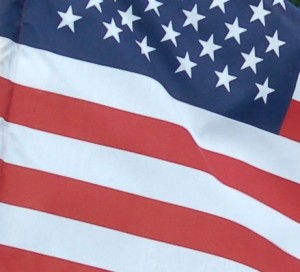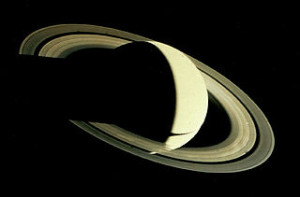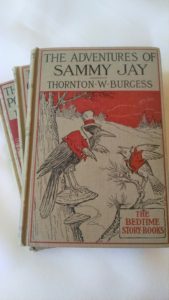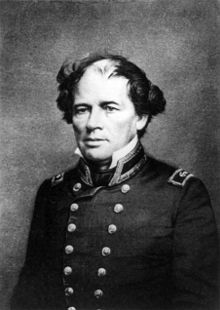Ratification Day marks the day in 1784 when the Continental Congress ratified the Treaty of Paris, the peace agreement with  Britain. The United States officially became an independent country. Thomas Jefferson, chairman of the ratification committee, went through difficult circumstances to get the necessary signatures on the ratification. He needed approvals from nine of the thirteen colonies. However, that winter was extremely brutal, and many delegates struggled to get to Maryland to sign the document. Finally, on January 14th two more delegates arrived, and the minimum nine signatures made the document a real treaty. Three copies of the document were sent on three different ships back to England. Even the journeys to the ships were challenging, and the ocean voyages were unusually difficult. Children can read about the document at: Ratification Day.
Britain. The United States officially became an independent country. Thomas Jefferson, chairman of the ratification committee, went through difficult circumstances to get the necessary signatures on the ratification. He needed approvals from nine of the thirteen colonies. However, that winter was extremely brutal, and many delegates struggled to get to Maryland to sign the document. Finally, on January 14th two more delegates arrived, and the minimum nine signatures made the document a real treaty. Three copies of the document were sent on three different ships back to England. Even the journeys to the ships were challenging, and the ocean voyages were unusually difficult. Children can read about the document at: Ratification Day.
Clarinet was invented in Nurnberg, Germany, in 1690. Idea: The music teacher or a child studying the clarinet could perhaps show how the clarinet works. The children could look at other woodwind instruments.

Ford Assembly Line
Henry Ford pushed the button to start the first assembly-line production in 1914. Idea: Ford’s first assembly line made cars. Children could form an assembly line to make ice cream sundaes. One person could be in charge of dishes. Another could add one kind of ice cream. Another could add a different kind of ice cream. A fourth student could top the ice cream with chocolate. Another could spritz on some whipped cream. Still another could add a cherry. Then everyone could eat!

Bronze Sculpture of Franklin Roosevelt
Franklin Roosevelt in 1943 became the first President to fly in an airplane. He flew from Miami, Florida, to Morocco to meet with Winston Churchill. He left Miami on January 11 and flew to the Caribbean, then along the coast of South America, and then across the Atlantic Ocean. The return trip took several days because he spent time with military troops.

Saturn and its Rings
Huygens Probe landed on Saturn’s moon Titan in 2005. The successful landing indicated Titan’s surface is covered with a powdery substance. Scientists are still analyzing the data the probe sent back to earth. The Cassini-Huygens mission was a joint venture of the European Space Agency, the Italian Space Agency, and NASA. The mission left earth on October 15, 1997. The Cassini portion continued to send back data about Saturn and remained active until September 15, 2017 when its energy was depleted and it dove into Saturn’s atmosphere, returning data until it was no more. Children can review data and more at: Cassini-Huygens.
Benedict Arnold (born Norwich, Connecticut, 1741; died London, England, June 14, 1801) was an American officer who became a traitor during the Revolutionary War. Children could read Jean Fritz’s Traitor: The Case of Benedict Arnold. They could also view: Benedict Arnold.
Julian Bond (born Nashville, Tennessee, 1940; died Fort Walton Beach, Florida, August 15, 2015) was a Civil Rights leader. He helped create the Student Nonviolent Coordinating Committee (SNCC).

Books by Thornton Burgess
Thornton Burgess (born Sandwich, Massachusetts, 1874; died Hampton, Massachusetts, June 5, 1965) wrote over 170 books for children. His works include Old Mother West and The Adventures of Jerry Muskrat. Children can read many of his works at: Project Gutenberg. They can learn more at: Thornton Burgess.
Hugh Lofting (born Maidenhead, England, 1886; died Santa Monica, California, September 26, 1947) was an author. He is famous for his ten Dr. Dolittle books. His Voyages of Dr. Dolittle won the 1923 Newbery Award. Children could read his works at: Project Gutenberg. They can learn more at: Hugh Lofting.
Shannon Lucid (born Shanghai, China, 1943) is a retired astronaut. She has flown in space five times, including spending 188 days aboard the Mir space station. At the time she set the US record for longest time in space and the world record for the longest time for a woman in space. She conducted experiments aboard the Mir space station. Older children could learn more at: Shannon Lucid.

Matthew Fontaine Maury
Matthew Fontaine Maury (born Spotsylvania County, Virginia, 1806; died Lexington Virginia, February 1, 1873) was an amazing seafarer, scientist, cartographer, educator, and author. He charted ocean currents and winds; he worked with others to establish a common language and measurement system for ocean navigation. The author of around 18 books, Maury was called “Father of Modern Oceanography and Naval Meteorology” and “Scientist of the Seas.” Older children could read some of his papers at the Virginia Military Institute site at: Maury Papers.

Portrait of Berthe Morisot painted by Edouard Manet
Berthe Morisot (born Bourges, France, 1841; died Paris, France, March 2, 1895) was an impressionist painter. She married Edouard Manet’s brother, Eugene, and she exhibited her first paintings at the Salon de Paris when she was 23 years old. She most enjoyed painting family and friends, landscapes, and familiar scenery around houses and gardens. Children can view some of her works at: Berthe Morisot.
Albert Schweitzer (born Kayserberg, Upper Alsace, 1875; died Lamboren, Gabon, September 4, 1965) balanced his love of music, theology, and medicine. As a young adult, he was a very accomplished organist. He also wrote about music and composers. In 1913 he went to Gabon as a missionary and as a doctor. He practiced there on and off, continuing to write and play concerts whenever possible. He received the 1952 Nobel Peace Prize. Idea: Children could research his life and decide which of the three areas benefited most from his work.
Hendrik Willem van Loon (born Rotterdam, Netherlands, 1882; died Connecticut, March 11, 1944) wrote a number of books for young adults. He received the very first Newbery Medal in 1922 for The Story of Mankind. Children can read The Story of Mankind at: Project Gutenberg. They can also learn more at: Hendrik Willem van Loon.
William Whipple (born Kittery, Maine, 1730; died Portsmouth, New Hampshire, November 10, 1785) signed the Declaration of Independence. He represented New Hampshire. A merchant, Whipple was active in New Hampshire government as it related to England. As time wore on, he became active in revolutionary activities. After signing the Declaration of Independence, he became a brigadier general in the American army and earned a reputation as a savvy and brave leader. Throughout the war, his slave Prince Whipple accompanied him everywhere. After the war, William Whipple freed Prince Whipple because the former thought that freedom was for all. Children could learn more at: William Whipple.